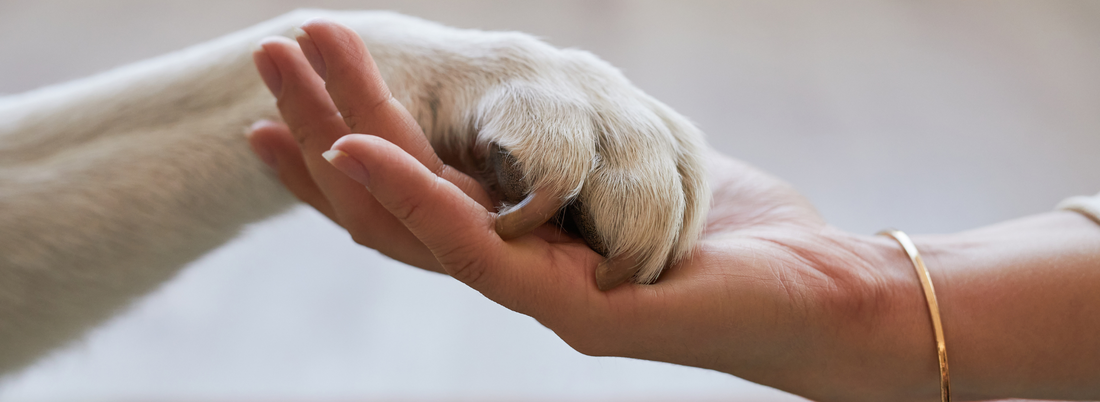Enriching Tails: Elevating Your Pet's Life Through Enrichment
Pets, much like humans, flourish when their days are imbued with activities that stimulate their cognitive faculties, gratify their sensory needs, and maintain their physical vigour. This approach to pet care recognizes that our animals are not just passive recipients of food and shelter, but active, sentient beings who require intellectual engagement and emotional connection. Providing a range of enriching experiences can drastically reduce the chances of our pets becoming lethargic or developing disruptive behaviours, which often stem from boredom and under-stimulation.
In crafting a life full of enrichment for our pets, we ensure that their innate needs are met. For example, dogs, with their keen sense of smell and natural drive to hunt, can benefit immensely from scent-based games that mimic these primal activities. Rabbits, in their wild state, are natural foragers, so creating an environment where they can dig and search for food can significantly enhance their well-being. Similarly, rats are clever and curious creatures needing opportunities to explore and solve puzzles to remain physically fit and mentally sharp.
Enrichment, therefore, doesn’t just prevent boredom; it promotes healthier, more balanced behaviour and can prevent common health issues. Today, we will explore various enrichment strategies tailored to different pets—dogs, rabbits, and rats—highlighting specific activities and modifications that can make their lives not just livable, but joyous and fulfilling. By understanding and implementing these practices, pet owners can elevate their companions’ quality of life to new heights, ensuring their days are filled with joy and discovery.
Understanding Pet Enrichment
Pet enrichment encompasses a suite of activities and practices designed specifically to tap into and stimulate a pet’s natural instincts and behaviours. This could include their inherent drive to forage for food, their curiosity to explore new environments, and their capacity to engage in problem-solving tasks. The core principle of pet enrichment is to create a dynamic and engaging environment that challenges pets in healthy ways. This enrichment can come through physical activities, mental puzzles, and interactive play that are tailored to each species' specific needs and natural tendencies.
The benefits of such an enriched environment are multifaceted. Physically, it keeps pets active and helps maintain their fitness, which is crucial for their overall health and longevity. Mentally, it stimulates their brain and can keep cognitive functions sharp, which is especially important as pets age. Emotionally, enrichment can fulfil their intrinsic needs and desires, which contributes to a more balanced and content state of mind.
Dog Enrichment: More Than Just Physical Exercise
Dog enrichment is a holistic approach that focuses on stimulating both the mind and body of our canine companions. While daily walks are vital for physical health and socialisation, they represent just one facet of a well-rounded enrichment plan. To truly enrich a dog's life, incorporating interactive and intellectually stimulating activities is key.
Interactive Toys and Games
Interactive toys, such as puzzle feeders, play a critical role in mental stimulation for dogs. These toys require dogs to solve problems in order to access their food, which not only slows down their eating but also gives their brain a workout. Puzzle feeders come in various difficulties, so finding one that matches your dog's level of expertise can keep them engaged without causing frustration.
Scent games are another fantastic way to tap into a dog’s natural sniffing abilities. By hiding treats around the home or yard, you encourage your dog to use their most developed sense—smell—to track down their rewards. This type of game can be scaled in complexity to provide ongoing challenges as your dog's scenting abilities improve.
Training Sessions
Training sessions that use positive reinforcement are not only for teaching basic commands or tricks but are also valuable tools for mental engagement. Each training session can introduce new tasks that require concentration and problem-solving, which are essential for cognitive development. The positive reinforcement approach rewards desired behaviours, making learning a fun and rewarding experience for your dog.
Rotating Toys
Regularly rotating your dog’s toys can prevent boredom and keep their interest in play activities high. Just as humans tire of repeated activities, dogs also need variety to stay engaged. Introducing new toys not only stimulates their curiosity but also provides them with new challenges. Toys that involve different senses, such as those that squeak, rattle, or have different textures, can cater to various aspects of your dog's play preferences.
The Benefits of a Rich Environment
By going beyond mere physical exercise to include mental and sensory activities, you significantly enhance your dog's quality of life. This comprehensive approach to enrichment can help prevent the development of anxiety and boredom-related behaviours, contribute to overall better health, and deepen the bond between you and your dog. Engaging your dog’s brain and body through thoughtful enrichment activities makes for a happier, healthier pet and fosters a rewarding relationship that benefits both pet and owner.
Rabbit Enrichment: Encouraging Natural Behaviours
Rabbit enrichment is essential for promoting a natural and fulfilling life for these inquisitive and active creatures. Due to their complex social and physiological needs, rabbits thrive in environments that cater to their instinctual behaviours such as chewing, digging, and foraging. Let’s explore how to enrich these aspects of their life.
Chew Toys and Physical Structures
Rabbits possess teeth that continuously grow throughout their lives, making chew toys not just a fun activity, but a necessity for dental health. Providing a variety of chewable items such as untreated wood blocks, hay cubes, and even cardboard can help keep their teeth trimmed and healthy. Besides benefiting their dental health, chewing is a soothing activity that can help reduce stress in rabbits.
Structures such as tunnels and hideouts mimic the burrows that rabbits naturally create in the wild. These can be made from safe materials like untreated wood, large piping, or woven grass mats. Hideouts not only offer a sense of safety and security but also provide a cool, secluded space for rabbits to retreat to when they feel the need for privacy.
Foraging Toys
Foraging is a natural behaviour for rabbits, and encouraging this can add a lot of enjoyment to their daily lives. Foraging toys that require rabbits to sniff out and dig for their food not only provide physical exercise but also mental stimulation. Simple homemade solutions can include stuffing hay and treats into a cardboard box with holes punched into it, or hiding food under small piles of paper or fabric in their enclosure.
These activities encourage rabbits to use their natural abilities, keeping their minds active and engaged. Moreover, foraging helps to slow down their eating, which improves digestion and mimics the more time-consuming process of finding food in the wild.
Outdoor Enclosures
If space and safety permit, providing an outdoor enclosure can greatly enhance a rabbit’s quality of life. Such spaces allow rabbits to experience natural elements like grass, soil, and plants, which are integral to their natural foraging and digging behaviours. When designing an outdoor area, it’s crucial to ensure it’s secure from predators and safe from harmful plants or chemicals. This enclosure should offer both sunny and shaded areas, allowing rabbits to regulate their body temperature through moving between different environments.
Rat Enrichment: Small Pets, Big Personalities
Rats are remarkably intelligent and dynamic creatures that possess a zest for exploration and mental challenge. Proper enrichment for pet rats not only caters to their physical needs but also nurtures their curious and engaging personalities. To fully support their lively temperaments, it's essential to provide an environment that stimulates their wide array of natural behaviours, from climbing and solving puzzles to gnawing and interacting with their human companions.
Climbing Structures and Puzzles
Incorporating climbing structures like ropes, ladders, and platforms into a rat’s enclosure allows them to indulge in their natural climbing instincts, giving them a physical outlet that keeps their bodies strong and agile. These setups can be rearranged periodically to create new challenges and prevent boredom.
Puzzles are another crucial aspect of rat enrichment. Puzzle toys that reward with treats not only stimulate mental activity but also mimic the foraging behaviour that rats exhibit in the wild. These can include commercially available toys or DIY solutions like hiding treats inside hollowed-out wooden blocks or under small containers that rats must learn to open or move.
Variety of Textures and Materials
Providing a diverse range of textures and materials in their enclosure helps keep the environment fresh and engaging for rats. Materials such as cardboard, paper, wood, and different fabrics can be used to create layers and hiding spots that rats will love to explore. Each material offers a unique texture that is not only fun to interact with but also beneficial for their dental health as they gnaw.
Homemade Toys and Human Interaction
While there are many rat-specific toys available in pet stores, homemade toys are often just as effective and can be made from simple household items. Toilet paper rolls, paper towel rolls, and cardboard boxes can be easily transformed into tunnels, hideouts, and chew toys. These DIY toys are not only cost-effective but also ensure a sustainable cycle of enrichment tools that can be replaced as they wear out.
Human interaction is vital for socialising rats and fulfilling their need for companionship. Rats are highly social animals, and regular, gentle handling helps to build trust and affection with their human caretakers. Additionally, allowing rats free-roaming time in a secure and rat-proofed area of the home provides them with a broader territory to explore and new challenges to overcome, which is excellent for their cognitive development.
The Impact of Enrichment
Enrichment plays a crucial role in maintaining the physical and mental health of pet rats. It prevents common issues such as obesity from inactivity and stress-related behaviours by keeping them engaged and active. More importantly, enrichment helps satisfy the intrinsic needs of rats to explore and interact with their environment, which leads to happier, healthier, and more well-adjusted pets.
Overall, a well-enriched life for a pet rat is rich in variety, challenge, and social interaction. By carefully crafting an environment that simulates natural behaviours and encourages growth and exploration, rat owners can ensure their tiny companions live fulfilling and joyous lives.
Implementing Pet Enrichment in Your Home
Getting started with pet enrichment doesn’t require elaborate tools or resources. You can begin by assessing your pet's natural behaviours and finding ways to mimic these in your home environment. Remember, the best enrichment is varied and unpredictable, which keeps it exciting and engaging for your pet.
Ultimately, enriching your pet's life is about creating a fulfilling environment that allows them to thrive physically, mentally, and emotionally. By taking the time to implement these ideas, you are investing in a happier, healthier companion.
Let's make each tail wag, each bunny hop, and each squeak a little richer and a lot more fun!

